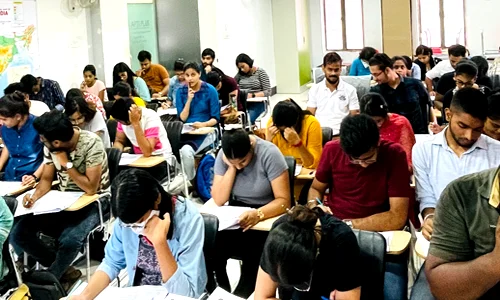



MGNREGA, renamed Pujya Bapu Gramin Rozgar Yojana, expands workdays to 125 and raises wages to boost rural livelihoods. While reforms promise stronger asset creation and women’s empowerment, delays in payments, employment gaps and administrative inefficiencies persist. Effective planning, transparency and accountability remain crucial for impact.
Click to View MoreIndia’s post-Independence economic journey moved from slow, state-led growth to market-driven expansion. The phrase “Hindu rate of growth,” coined by economist Raj Krishna, described India’s stagnant average growth of roughly three to three-and-a-half percent between the nineteen fifties and seventies. However, growth began accelerating from the early nineteen eighties, well before the nineteen ninety-one reforms, as selective liberalisation and industrial capacity building improved productivity. The reform wave of nineteen ninety-one deepened this shift, while the two thousand three to two thousand eleven phase delivered high growth of eight to nine percent. Since then, India has faced moderation linked to global headwinds, financial stress and the pandemic, yet it remains the fastest growing major economy. Thus, India has long surpassed the so-called Hindu rate of growth, evolving from a low-growth economy to one increasingly driven by reform, capability building and structural transformation.
Click to View MoreIndia’s childcare workers, despite supporting 23 million children through 1.4 million Anganwadis, remain undervalued, poorly paid, and inadequately supported. With rising care needs due to migration, climate stress, and women’s workforce participation, India must professionalise its childcare workforce, expand infrastructure, increase investment to 1–1.5% of GDP, and strengthen ICDS and crèche schemes. Recognising childcare as a critical component of human development is essential for building an inclusive, gender-just nation.
Click to View MoreThe Mahatma Gandhi National Rural Employment Guarantee Act (MGNREGA) aims to enhance livelihood security in rural India by guaranteeing at least 100 days of wage employment annually to rural households willing to perform unskilled manual work. The scheme emphasizes inclusion, with at least one-third of beneficiaries being women, and mandates timely wage payments with legal entitlements for unemployment allowances if work is not provided within 15 days of demand. MGNREGA supports sustainable rural development through asset creation such as water conservation, drought proofing, irrigation, and rural infrastructure. The Act strengthens decentralized planning through Panchayati Raj Institutions and encourages transparency via social audits.
Click to View MoreMuslim women’s rights in India face a clash between personal law and constitutional equality. The judiciary advanced reform from the Shah Bano case to the Shayara Bano verdict banning instant triple talaq. Despite the 2019 law, issues in inheritance and polygamy continue amid Uniform Civil Code debates.
Click to View MoreClimate change acts as a threat multiplier, worsening gender-based violence by deepening poverty, displacement, and resource stress. Women face higher risks of domestic abuse, exploitation, and child marriage during climate crises. Integrating gender justice and empowering women in climate action are vital for safety and sustainable development.
Click to View MoreThe Jal Jeevan Mission has raised rural tap water access from 17% in 2019 to over 81% by October 2025, saving 5.5 crore hours daily and averting 4 lakh deaths. Through community participation and digital monitoring, it strengthens sustainability, water quality, and rural empowerment nationwide.
Click to View MoreNITI Aayog's Women Entrepreneurship Platform (WEP) launched the 'WE Rise Initiative,' marking a powerful push for women's economic empowerment. Designed around the 'Three Ps'—Patronage, Partnership, and Practice—this digital platform provides customized mentorship and financial linkage to high-potential women-led enterprises.
Click to View MoreOver 1,200 Islamic scholars endorsed the 2019 Mecca Charter, promoting a moderate Islam. It rejects extremism, condemns terrorism, supports women’s empowerment, environmental protection, and national loyalty, reinforcing India’s secular, pluralistic values and fostering communal harmony and national integration.
Click to View MoreThe Swasth Nari, Sashakt Parivar Abhiyaan, launched by PM Modi, unites MoHFW and MoWCD to strengthen women’s and children’s healthcare through preventive care, early detection, and community action, envisioning healthier families as the cornerstone of a Viksit Bharat by 2047.
Click to View MoreThe UN Gender Snapshot 2025 warns of stalled equality, risking 351 million women in poverty by 2030. As Beijing+30 approaches, India must confront climate, conflict, and AI challenges while seizing opportunities to advance education, health, employment, and representation goals.
Click to View MoreThe Supreme Court’s refusal to extend the POSH Act to women political workers exposes a protection gap leaving them vulnerable, undermining gender equality, participation; addressing it requires legislative amendments, Election Commission mandates and party reforms to ensure safe, political spaces.
Click to View More
© 2025 iasgyan. All right reserved